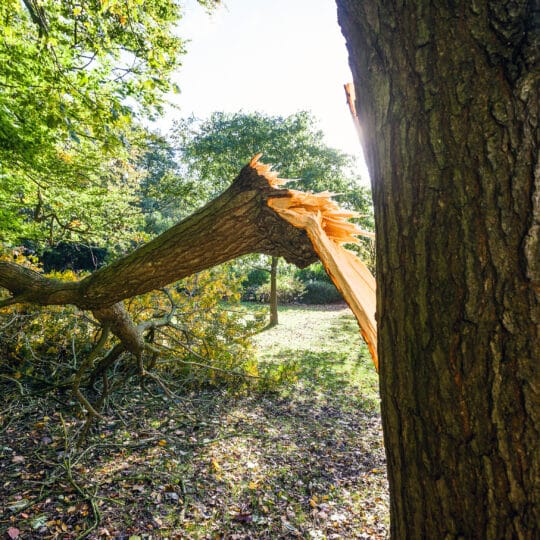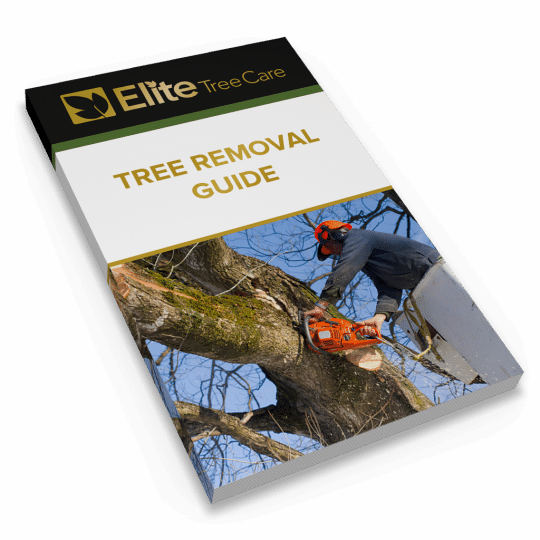Removing a Tree after Storm Damage
How to Make it a Safe and Efficient Process
Posted
October 3, 2024

From hurricane and tornado season to blizzards and lightening strikes, trees are susceptible to a number of natural disasters. Tree damage is one of the most common property concerns during a severe storm. There are ways for you to help prevent extensive damage before a storm as well as safe methods for removing a storm-damaged tree after the weather has cleared.
Preventing Storm Damage to Trees
Healthy trees are stronger and better prepared to stand up to severe storm conditions. This is why it’s essential to regularly inspect your trees for signs of disease, decay, or weakness. You can work to correct the problem before it becomes a major hazard. One way to help ensure a tree’s health is by properly pruning branches to encourage healthy growth. It’s better to wait until trees are dormant in the winter for any major pruning. However, it’s always a good idea to remove dead, diseased, and weakened branches before they fall on their own in a storm.
Assessing Storm Damage
Healthy trees are still at risk for storm damage. All it takes is one lightning strike to turn a thriving tree into splintered mess. One of the key components of storm cleanup is determining how safe the area is. Once flood waters have receded and there’s a way to clear a path, take the time to assess the situation and keep the following potential hazards in mind:
- Storm-damaged trees are weaker and unpredictable.
- Hanging or broken branches are at risk of falling.
- Leaning trees may still fall under their weight.
- Added tension on the root system of an uprooted tree could cause pieces to snap back unpredictably.
- Stay away from any downed power lines near or entangled with the tree. Call your utility company immediately.
Even if a tree is still standing, there may be some issues that are not immediately visible. Hidden cracks and internal rotting weaken the structure of the tree over time. It may take a few more storms to topple these trees, but you could also prevent this from happening by using certain methods to support healthy tree growth or remove the tree.
Removing a Storm-Damaged Tree
It’s important to collect broken branches strewn across your lawn or even cut up smaller limbs. But there are many reasons why a certified arborist is needed to deal with a storm-damaged tree. Whether a large limb is torn off or the entire tree is uprooted, these precarious trees require the proper equipment and experience to be safely removed. Trying to move trees that have fallen onto your home, fence, or power lines also requires careful consideration to prevent further damage.
One thing you can do before a tree removal company arrives is clear the area around the tree of any items that could be damaged by additional falling branches or debris. You can also get the paperwork started on any insurance claims if the tree has fallen onto your roof, fence, or car. Take plenty of pictures before the tree is removed and the area is cleaned.
Removing a tree after a storm can be a challenging and hazardous task. It’s always best to consult with a professional tree removal service to help protect your property and ensure the area is safe after a storm. Contact Elite Tree Care to help assess any storm damage around your home and how you can help strengthen your trees to prevent future problems.

Download Your FREE Tree Removal Guide
Even dedicated DIYers should think twice before taking on the task of tree removal. Our guide will help you decide whether to hire a tree service and how to get the most value for your money.